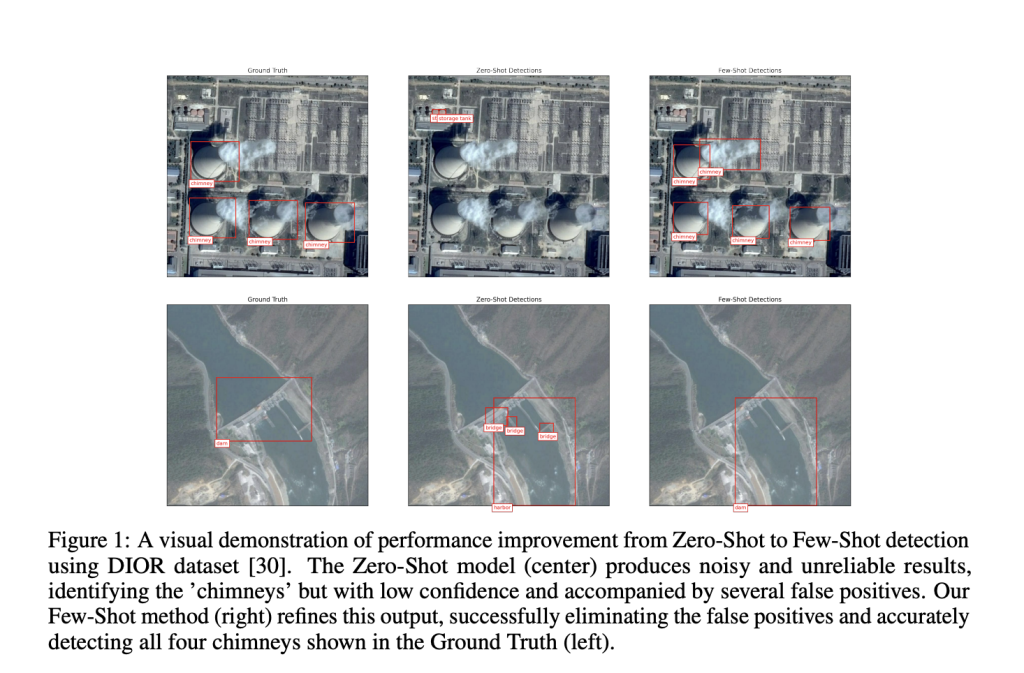Google AI Introduces FLAME Approach: A One-Step Active Learning that Selects the Most Informative Samples for Training and Makes a Model Specialization Super Fast
Open vocabulary object detectors answer text queries with boxes. In remote sensing, zero shot performance drops because classes are fine grained and visual context is unusual. Google Research team proposess FLAME, a one step active learning strategy that rides on a strong open vocabulary detector and adds a tiny refiner that you can train in near real time on a CPU. The base model generates high recall proposals, the refiner filters false positives with a few targeted labels, and you avoid full model fine tuning. It reports state of the art accuracy on DOTA and DIOR with 30 shots, and minute scale adaptation per label on a CPU. https://arxiv.org/pdf/2510.17670v1 Problem framing Open vocabulary detectors such as OWL ViT v2 are trained on web scale image text pairs. They generalize well on natural images, yet they struggle when categories are subtle, for example chimney versus storage tank, or when the imaging geometry is different, for example nadir aerial tiles with rotated objects and small scales. Precision falls because the text embedding and the visual embedding overlap for look alike categories. A practical system needs the breadth of open vocabulary models, and the precision of a local specialist, without hours of GPU fine tuning or thousands of new labels. Method and design in concise FLAME is a cascaded pipeline. Step one, run a zero shot open vocabulary detector to produce many candidate boxes for a text query, for example “chimney.” Step two, represent each candidate with visual features and its similarity to the text. Step three, retrieve marginal samples that sit near the decision boundary by doing a low dimensional projection with PCA, then a density estimate, then select the uncertain band. Step four, cluster this band and pick one item per cluster for diversity. Step five, have a user label about 30 crops as positive or negative. Step six, optionally rebalance with SMOTE or SVM SMOTE if the labels are skewed. Step seven, train a small classifier, for example an RBF SVM or a two layer MLP, to accept or reject the original proposals. The base detector stays frozen, so you keep recall and generalization, and the refiner learns the exact semantics the user meant. https://arxiv.org/pdf/2510.17670v1 Datasets, base models, and setup Evaluation uses two standard remote sensing detection benchmarks. DOTA has oriented boxes over 15 categories in high resolution aerial images. DIOR has 23,463 images and 192,472 instances over 20 categories. The comparison includes a zero shot OWL ViT v2 baseline, a zero shot RS OWL ViT v2 that is fine tuned on RS WebLI, and several few shot baselines. RS OWL ViT v2 improves zero shot mean AP to 31.827 percent on DOTA and 29.387 percent on DIOR, which becomes the starting point for FLAME. https://arxiv.org/pdf/2510.17670v1 Understanding the Results On 30 shot adaptation, FLAME cascaded on RS OWL ViT v2 reaches 53.96 percent AP on DOTA and 53.21 percent AP on DIOR, which is the top accuracy among the listed methods. The comparison includes SIoU, a prototype based method with DINOv2, and a few shot method proposed by the research team. These numbers appear in Table 1. The research team also reports the per class breakdown in Table 2. On DIOR, the chimney class improves from 0.11 in zero shot to 0.94 after FLAME, which illustrates how the refiner removes look alike false positives from the open vocabulary proposals. https://arxiv.org/pdf/2510.17670v1 Key Takeaways FLAME is a one step active learning cascade over OWL ViT v2, it retrieves marginal samples using density estimation, enforces diversity with clustering, collects about 30 labels, and trains a lightweight refiner such as an RBF SVM or a small MLP, with no base model fine tuning. With 30 shots, FLAME on RS OWL ViT v2 reaches 53.96% AP on DOTA and 53.21% AP on DIOR, exceeding prior few shot baselines including SIoU and a prototype method with DINOv2. On DIOR, the chimney class improves from 0.11 in zero shot to 0.94 after FLAME, which shows strong filtering of look alike false positives. Adaptation runs in about 1 minute for each label on a standard CPU, which supports near real time, user in the loop specialization. Zero shot OWL ViT v2 starts at 13.774% AP on DOTA and 14.982% on DIOR, RS OWL ViT v2 raises zero shot AP to 31.827% and 29.387% respectively, and FLAME then delivers the large precision gains on top. Editorial Comments FLAME is a one step active learning cascade that layers a tiny refiner on top of OWL ViT v2, selecting marginal detections, collecting about 30 labels, and training a small classifier without touching the base model. On DOTA and DIOR, FLAME with RS OWL ViT v2 reports 53.96 percent AP and 53.21 percent AP, establishing a strong few shot baseline. On DIOR chimney, average precision rises from 0.11 to 0.94 after refinement, illustrating false positive suppression. Adaptation runs in about 1 minute per label on a CPU, enabling interactive specialization. OWLv2 and RS WebLI provide the foundation for zero shot proposals. Overall, FLAME demonstrates a practical path to open vocabulary detection specialization in remote sensing by pairing RS OWL ViT v2 proposals with a minute scale CPU refiner that lifts DOTA to 53.96 percent AP and DIOR to 53.21 percent AP. Check out the Paper here. Feel free to check out our GitHub Page for Tutorials, Codes and Notebooks. Also, feel free to follow us on Twitter and don’t forget to join our 100k+ ML SubReddit and Subscribe to our Newsletter. Wait! are you on telegram? now you can join us on telegram as well. The post Google AI Introduces FLAME Approach: A One-Step Active Learning that Selects the Most Informative Samples for Training and Makes a Model Specialization Super Fast appeared first on MarkTechPost.




